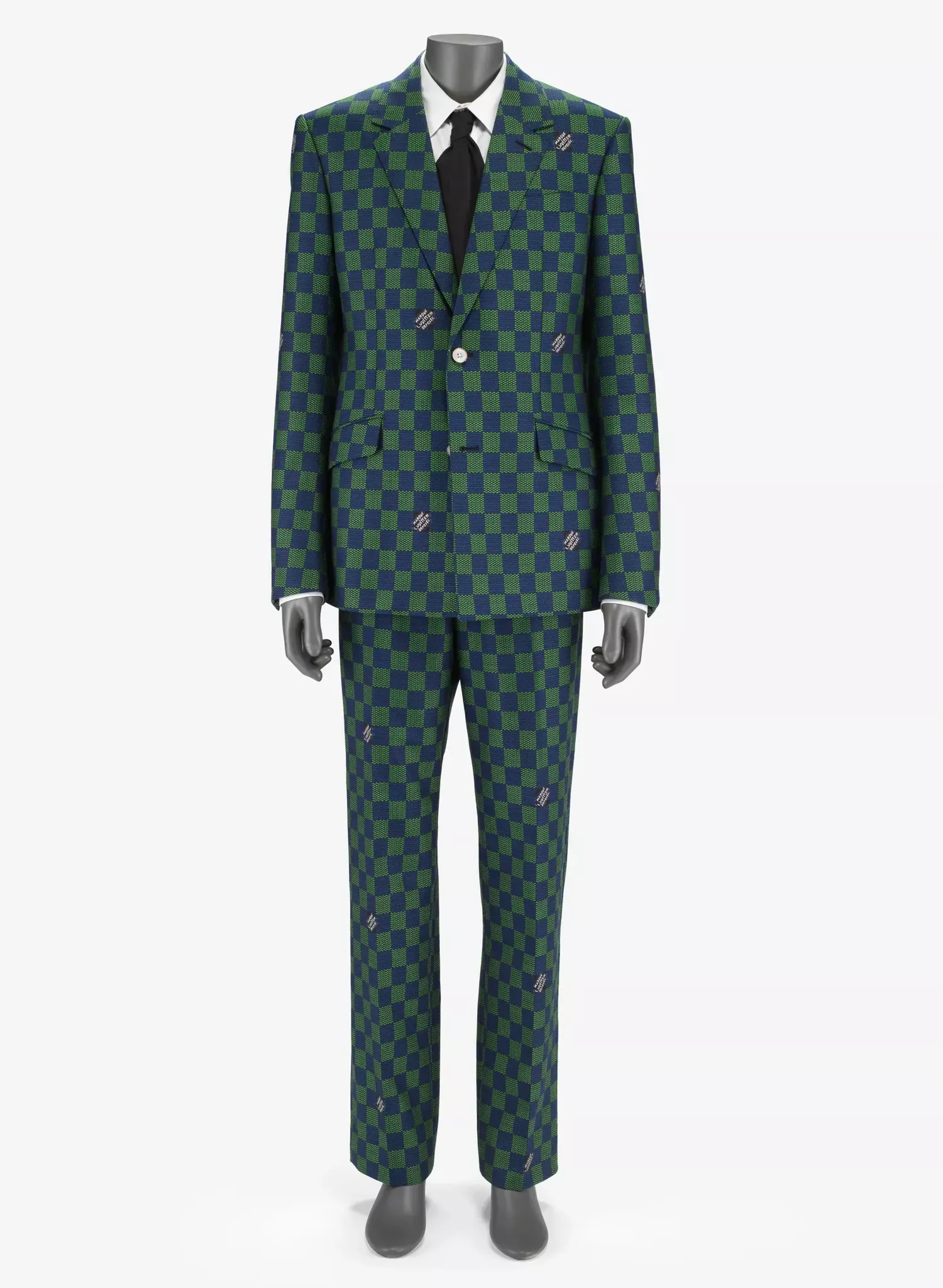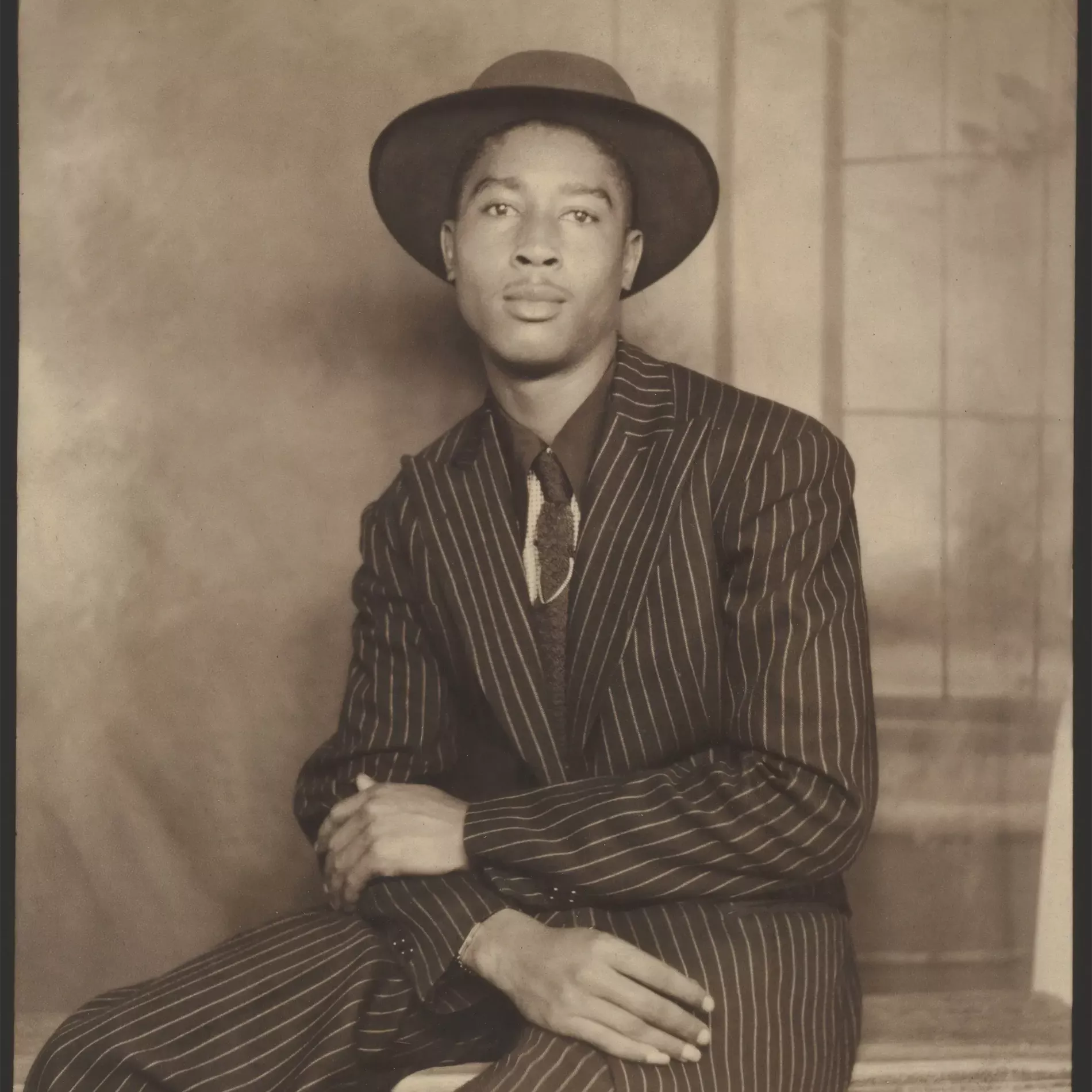The Costume Institute has named 'Superfine: Tailoring Black Style' as the theme for its 2025 exhibition, but what exactly does this mean? We explore below
Contemporary Black dandyism has been enlivening the red carpet at the Met Gala for years. Think of Billy Porter in his Sun God ensemble by The Blonds for the 'Camp' exhibition of 2019, A$AP Rocky with a patchworked memory quilt by ERL thrown over his silk taffeta tuxedo at 2021’s 'In America: A Lexicon of Fashion' show, or Lil Nas X in crystal-encrusted Luar at 'Sleeping Beauties' last year.
Advertisement
Announced today, 'Superfine: Tailoring Black Style', the upcoming Costume Institute show at the Metropolitan Museum of Art, will take the Black dandy as its subject, examining the importance of clothing and style to the formation of Black identities in the Atlantic diaspora.
It’s the first Costume Institute exhibition since 2003’s 'Men in Skirts' to focus exclusively on menswear, as well as the first since Andrew Bolton became Curator in Charge to involve a guest curator. Monica Miller, Professor and Chair of Africana Studies at Barnard College, Columbia University, will examine the figure of the Black dandy from its earliest depictions in 18th-century art to modern-day representations from the runways and film. The show is inspired by her 2009 book Slaves to Fashion: Black Dandyism and the Styling of Black Diasporic Identity, in which she establishes Black dandyism as both an aesthetic and political construct.

Zoot suit, American, 1940s; Alfred Z. Solomon-Janet A. Sloane Endowment Fund, 2024 (2024.2a, b). Photo: © The Metropolitan Museum of Art. Photo: © The Metropolitan Museum of Art

Ensemble, Pharrell Williams (American, born 1973) for Louis Vuitton (French, founded 1854), spring/summer 2025 menswear; Courtesy Collection Louis Vuitton. Photo: © The Metropolitan Museum of Art . Photo: © The Metropolitan Museum of Art

Suit, American, 1939; Courtesy Benny Reese, Reese's Vintage Pieces. Photo: © The Metropolitan Museum of Art . Photo: © The Metropolitan Museum of Art
Dandyism, for the unacquainted, is an exuberant attention to dress. In advance of this morning’s announcement, Miller said another definition is “dressing wisely and well.” She described Black dandyism as “a strategy and a tool to rethink identity, to reimagine the self in a different context. To really push a boundary –especially during the time of enslavement, to really push a boundary on who and what counts as human, even.” The history of Black dandyism that the exhibition showcases will “illustrate how Black people transformed from being enslaved and stylised as luxury items, acquired like any other signifier of wealth and status, to autonomous self-fashioning individuals who are global trendsetters.” If, as Miller has argued, the Black Dandy originates in the space between hyper-visibility (on the red carpet, say) and invisibility (in establishment institutions like The Met), this show is poised to address that.
In the wake of the Black Lives Matter movement, the Costume Institute began recognising the realities that American fashion narratives have neglected in the past. Since 2020, roughly 150 pieces by BIPOC designers have been acquired, some of which feature in 'Superfine'. “I feel that the show itself marks a really important step in our commitment to diversifying our exhibitions and collections, as well as redressing some of the historical biases within our curatorial practice,” said Bolton. “It’s very much about making fashion at The Met more of a gateway to access and inclusivity.”
It was via his research for the show “In America: A Lexicon of Fashion” in 2021 that Bolton got acquainted with Miller’s work. “What’s interesting about Black dandyism is it’s not just an identity,” he said. “Obviously, you have people like Iké Udé, the photographer and artist who self-identifies as a dandy [Udé is serving as Special Consultant to the exhibition], but it’s also a concept as well,” Bolton elaborated. “I think a lot of Black designers today are exploring the different modalities that the Black dandy represents – things like freedom, dissonance, theatricality.”

Ensemble, Virgil Abloh (American, 1980–2021) for Louis Vuitton (French, founded 1854), fall/winter 2021 menswear; Courtesy Collection Louis Vuitton. Photo: © The Metropolitan Museum of Art . Photo: © The Metropolitan Museum of Art

“Maya Angelou Passport” ensemble, Foday Dumbuya (Sierra Leonean) for Labrum London (British, founded 2014), fall/winter 2023; Courtesy Labrum London. . Photo: © The Metropolitan Museum of Art . Photo: © The Metropolitan Museum of Art
The exhibition will be arranged by 12 characteristics of Black dandyism, an organisational principle informed by a 1934 Zora Neale Hurston essay, The Characteristics of Negro Expression. The sections will tell the story of the Black dandy’s evolution over time via not just garments and accessories, but a range of media that includes drawings, paintings, photographs, and film excerpts. The first – Ownership – showcases an enslaved person’s livery from 19th-century Maryland. Jook, which was one of Hurston’s original categories and was concerned with music, dancing and pleasure, includes a pair of Zoot suits from the 1940s; while Cosmopolitanism features pieces designed by both Pharrell Williams and the late Virgil Abloh for Louis Vuitton men’s.
“The contemporary designers that are in the show are there because many of them talk about and use the history that we’re recounting as part of their design philosophies,” Miller pointed out. In some cases, they also have heritage in West Africa or the Caribbean. “It’s been really interesting to see the show notes of Virgil Abloh and Grace Wales Bonner – they’re really well versed in the kinds of issues that we’re talking about in the exhibition, [issues] that are related to race and power, that are related to immigration, slavery, colonies and colonisation, empowerment, joy, aesthetics.”
Bolton, for his part, believes menswear is in the midst of a renaissance. “That’s thanks not just to Black designers but also to men of style, like the male co-chairs for our Met Gala.” This year the co-chairs are Pharrell Williams, actor Colman Domingo, Formula One driver Lewis Hamilton, musician A$AP Rocky, and Anna Wintour, with basketball star Lebron James acting as honorary co-chair. “They’re all men who aren’t afraid to take risks with their self-presentation. They take advantage of classic forms, but they also remix them and break them down in really new ways,” Bolton said. “I think Black men and Black designers are very much at the forefront of this new renaissance in menswear.”

“L’E Goldwill” bullion, Dynasty and Soull Ogun (American, born 1984) for L’Enchanteur (American, founded 2017), 2023; Courtesy L’Enchanteur. Photo: © The Metropolitan Museum of Art

“Name Spell Name Plate” necklace, Dynasty and Soull Ogun (American, born 1984) for L’Enchanteur (American, founded 2017), 2024; Courtesy L’Enchanteur. Photo: © The Metropolitan Museum of Art

“Kalinago Royal Coin #8” pendant, Dynasty and Soull Ogun (American, born 1984) for L’Enchanteur (American, founded 2017), 2023; Courtesy L’Enchanteur. Photo: © The Metropolitan Museum of Art
As in previous years, the exhibition will gather a group of influential collaborators, each of whom are providing distinct elements: The interdisciplinary artist Torkwase Dyson will be responsible for the conceptual design of the exhibition; Tanda Francis, who creates monumental African heads and masks seen in both public and personal spaces, is creating bespoke mannequin heads that will be produced for the show; and the artist Tyler Mitchell will be photographing the catalogue.
'Superfine: Tailoring Black Style' will be made possible by Louis Vuitton, with other funding from Instagram, the Hobson/Lucas Family Foundation, Dr Precious Moloi-Motsepe and Africa Fashion International, Tyler Perry, and Condé Nast. It will run from May 10–October 26, 2025, following the Met Gala on May 5, which provides the Costume Institute with its primary source of funding for all activities.
Originally published on Vogue.com
